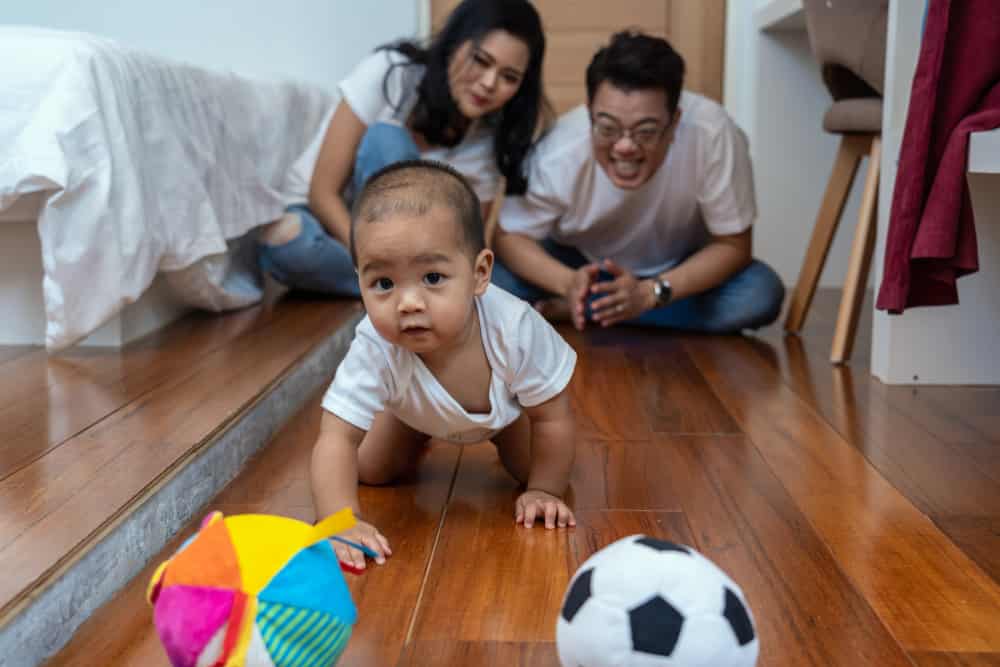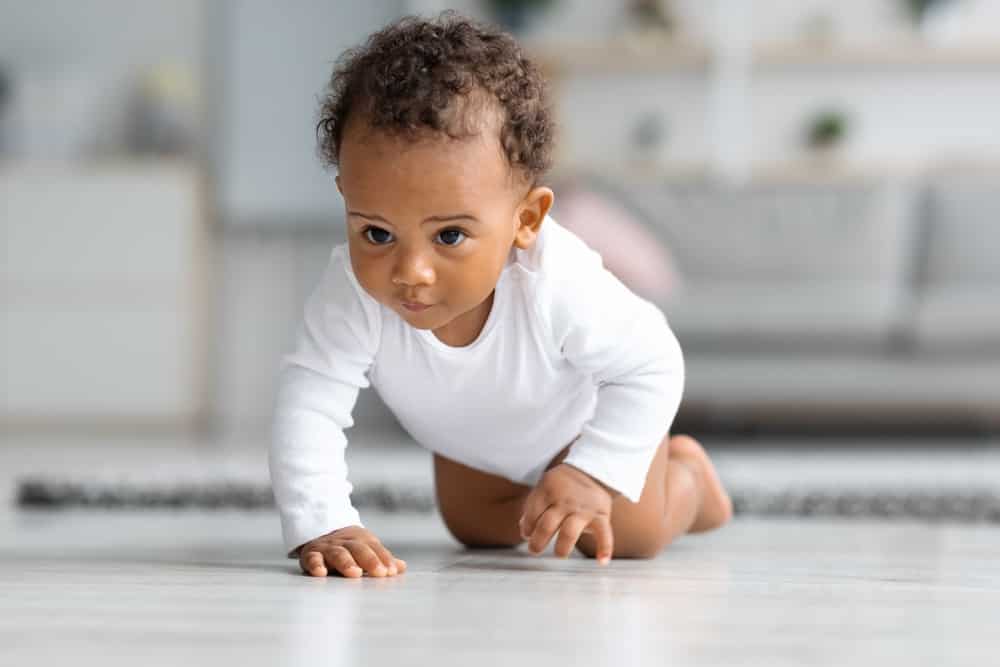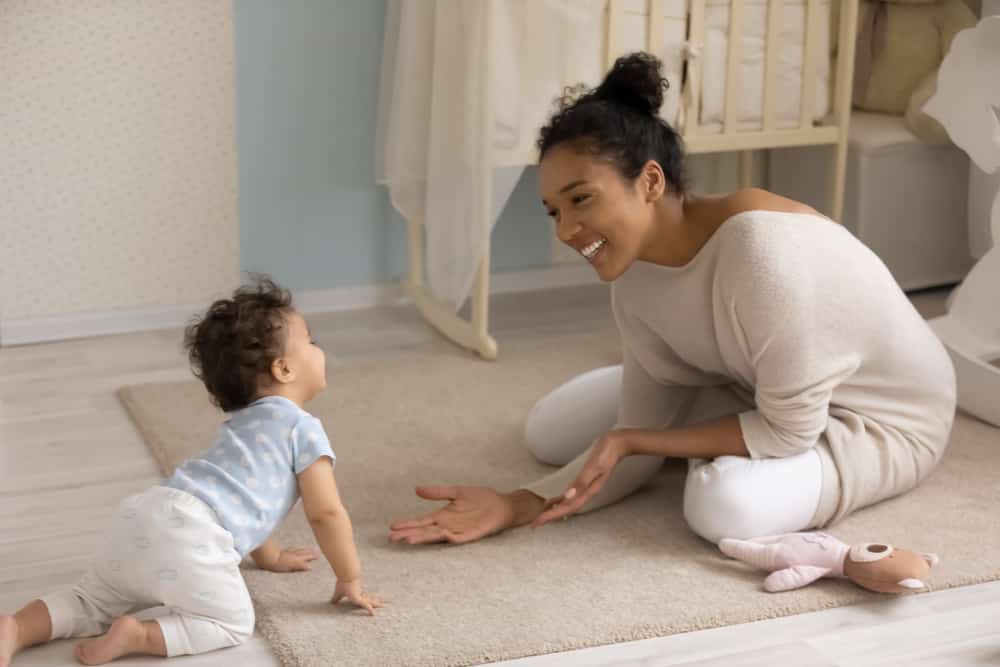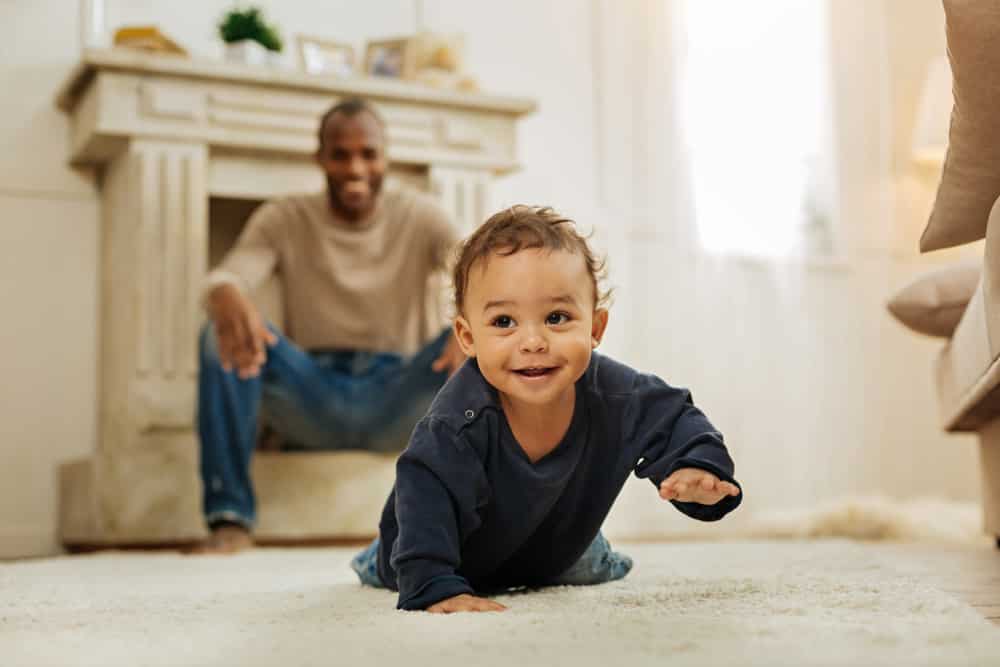Many parents look forward to seeing their babies crawling. It's also a significant change for your baby, as they can now move around independently and begin to fully explore their surroundings! Many babies begin to crawl around the age of 8 months, though some may begin earlier and others later. Some babies will move around by bottom-shuffling, eventually going onto all fours, sometimes just before they start walking. Other babies just skip crawling altogether! Every baby is different, but there are some good indicators that determine when they are ready.
Key Points of Babies Learning How to Crawl
- While most babies crawl before they walk, not all will go through this stage. Some babies start cruising right away, holding onto furniture as they walk.
- Infants reach developmental milestones at different ages. Some babies may skip crawling altogether and instead start walking.
- Some babies need a little more time to master the skill. If a baby has met the majority of their developmental milestones and crawling appears to be the only skill they have not yet mastered, there is no need to be worried.
- Babies typically learn to roll over first, then sit up, and finally crawl. Most babies can sit up on their own around 6 months.
- A baby can find new perspectives by balancing on their bottom and using their legs for support, increasing exploration and learning. This frees up a baby's hands for reaching out, grasping, and learning about the properties of objects.
When Should My Baby Start Crawling?
According to the American Academy of Pediatrics, babies crawl for the first time between the ages of 8 and 12 months. Because babies learn and develop at their own pace, some babies will crawl sooner than others. Babies with developmental delays may begin crawling later. If your baby has reached their first birthday and has not crawled, or if you have questions about when they should crawl, always contact your pediatrician.

Most babies crawl between ages 8 and 12 months.
©TZIDO SUN/Shutterstock.com
Signs That Baby is Getting Ready to Crawl
Watching your baby reach new milestones is an exciting experience for parents. Crawling is just one milestone that marks the beginning of your baby's mobility and independence. While every baby is different, there are some tell-tale signs that your baby is ready. Some indicators include:
- Pushing up to feet and hands in a “bear walk” position.
- Rolling from belly to back or vice versa are signs that a baby is getting ready to crawl.
- They can use their arms to move along the floor on their tummy.
- Moving into a crawling position and then into a sitting position.
- They can almost reach the crawling position with one leg in the correct position and the other sticking out straight.
The Importance of Tummy Time
Giving a baby supervised “tummy time” can help them develop the muscles they need for crawling and sitting up.
The World Health Organization (WHO) recommends that infants under the age of one spend at least 30 minutes per day on their tummies. This should take place when they are awake and alert. The WHO also recommends that babies be physically active in a variety of ways throughout the day.
Tummy time is possible for babies from birth. A caregiver can place them on their tummy on the floor for brief periods of time, gradually increasing the duration. A caregiver can place a rolled-up towel under the baby's armpits if they are having a hard time lifting their head.
Not all babies like to play on their bellies. You can make it more enjoyable by interacting with and playing with toys.

Tummy time can be implemented a few days after birth.
©Troyan/Shutterstock.com
How Do Babies Make the Transition From Tummy Time to Crawling?
Experts recommend starting our children on tummy time from birth, and while this may appear cute and fun, there is a reason for this. Tummy time helps their muscles and development, which they will need to sit, crawl, and eventually walk.
Tummy time will change as they grow; they will become more active, hold their heads up and control their head movements, move their arms, and eventually learn to push themselves up with their hands.
Some babies will crawl from this position, while others will prefer to crawl from a seated position.
Different Crawling Techniques
When you've reached the stage that your baby is ready to crawl, it's possible you may notice that they are not using the traditional hands-and-knees method. But no need for concern. Just as every baby is unique, there are various types of crawling they adopt. If you're worried about a crawl, talk to your pediatrician. They'll be able to tell you what's normal and what isn't. But, whatever style your baby chooses, rejoice because it's one crawl closer to them learning to walk! Here are seven types:
1. The Classic
You might have imagined your baby doing the classic crawl. This is the more common of the crawling methods. The baby can balance their weight on their knees and hands and shuffle forward (opposite hands to knees) in a crisscross motion, similar to how an adult or big kid would crawl. This type of crawl helps babies develop hand-eye coordination and balance.

The Classic is a common crawling style.
©Prostock-studio/Shutterstock.com
2. The Commando
This type of crawl is also called belly crawl. Just like a soldier, your baby will move around on their tummy. They move forward by placing their belly on the ground and using their arms and feet. This crawl is a good alternative to the classic method as it helps babies build upper body strength and coordination.
3. The Bear Crawl
This style is similar to the classic crawl, except that your baby's knees and elbows are straight, putting the balance on their hands and feet. This causes their backs to arch as they propel themselves forward with the sides of their feet. This method encourages babies to use their entire bodies, helping to build upper body strength and develop motor skills. Like all techniques, this crawl can help set the stage for future movements like walking and running.
4. The One-Legged Crawl
Although less common than other crawling methods, the one-legged crawl is a sign of a baby's individuality. This method can also help babies develop muscles and coordination skills. This type of crawl is similar to the bottom crawl in that your baby drags themselves around with one leg and both hands. As with any technique, the one-legged crawl can lead to further exploration and mobility.
5. The Backwards Crawl
The backwards crawl is often the first way your baby learns to move. They usually shuffle back by lying on their backs and pushing their feet off the ground. Although this crawl normally doesn't last long, it can lead to other styles such as the crab crawl, in which the baby waddles sideways. Parents should encourage their babies to crawl and explore their surroundings to help hand-eye coordination and overall physical strength.
6. The Bottom Shuffle
The bottom shuffle is also known as the “scooting” technique, where babies slide and drag their bottoms around. While it may appear unusual to parents, it's a perfectly normal way for babies to crawl. The bottom crawler allows their feet and legs to rest and use their hands as the primary means of movement. Parents can encourage this style by creating a safe and obstacle-free environment to allow their babies to explore.
7. The Rolling Crawl
You may have a rolling baby, which is when your baby rolls to move. They usually roll themselves with their arms, and their heads are occasionally elevated. Some babies will master the art of rolling and use it as an alternative crawling style. Rolling can be an early stage of crawling, and some babies might use this method to explore their environment before they advance to other crawls.
How to Get Your Baby to Crawl
Physical development in babies is a natural process. There is no need to rush your child to crawl, but you can give them opportunities to practice skills that will help them move. It's important to start by creating a comfortable space for them to practice. Here are a few tips to help your baby get started:
- Make supervised tummy time a part of your daily routine from an early age. This strengthens the core muscles of your baby, preparing them for future motor skills.
- If you want to work out but don't have time because you're too busy caring for your baby, use your infant's tummy time to do some push-ups!
- When your baby begins to reach for objects, place a favorite toy just out of reach. This will encourage them to move forward with their bodies.
- As your baby gets closer to the toy, you can move it away from them. They will eventually be able to crawl a few paces to get to it, and then flop down. Use a toy that moves like a rolling drum does to encourage them to keep going. You can also manually move the toy.

‘Crawling' with your baby encourages him to do the same.
©Olesia Bilkei/Shutterstock.com
Safety First
Once your child can crawl, it's critical to baby-proof your home and keep an eye on him or her. Crawlers will eat anything, and it's only a matter of time before they pull up on the edge of the coffee table and reach for everything up there as well. To ensure the safety of your little one at all times, it's important to create a safe and comfortable space for them to explore. Keep these points in mind:
- Fix all large pieces of furniture to the wall. Babies frequently attempt to climb or hold on to items such as bookcases or cabinets that are prone to tipping and causing serious injury or death.
- Place gates at the top and bottom of all staircases, even those with doors. Babies may learn to climb the stairs from the bottom and then fall back down.
- Never allow your child to play near water bodies unless actively supervised by a responsible adult. Drowning can occur in even small amounts of water, such as water in a bucket. Drowning can happen in the blink of an eye, and it may not be obvious that it is happening.

Encourage your baby to crawl by getting down to his level.
©fizkes/Shutterstock.com
Conclusion
It's important to remember that all babies develop at different rates, so you shouldn't be too concerned if yours is taking their time. This is especially important to keep in mind if your child is born prematurely.
Learning new physical skills is difficult for babies and can cause them to become upset and cry. This can be difficult for you as well, so remember to seek support from family and friends, as well as advice from your baby's pediatrician or family doctor.
The image featured at the top of this post is ©Dmytro Zinkevych/Shutterstock.com
